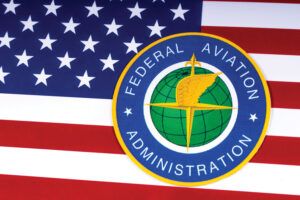
By just about every measure, the aeronautical industry in the United States—including the number of pilots, manufacturing and federal oversight—is by far the largest and most complex in the world. It stands to reason then that the rest of the aviation authoritarian agencies pretty much mirror the standard operating procedures of the USA and that the “Feds” across the world are pretty standardized, with the airline side remarkably standardized and the widest variation likely being on the Experimental side.
With all due respect to non-U.S. readers, for simplicity and brevity, I will refer to all members of government aviation agencies, whatever they’re actually called, as Feds as in my experience they all seem to be cut from the same cloth, just as we are.
Federal Interactions
One of my favorite Fed stories comes from airline operations over a few week period a few years ago at John Wayne Airport in Southern California (KSNA), otherwise known as Orange County, Santa Ana or the Han Solo airport—this being an inside joke after a certain someone decided to use the taxiway as a runway. Any airport with that many names is sure to be iconic.
One day a gentleman Fed of, shall we say, “seasoned” age decided to camp out on the ramp at gates with Boeing 737 operations. What made this fellow’s day (often several times a day) was finding one spot on the inside of one engine nacelle where there would be a small hole without a fastener in it. He would mention it to the crew who would be compelled to write it up in the logbook and then call maintenance control, who, in turn, would call “contract maintenance,” an independent source of line maintenance used by airlines at airports where the daily volume is too light for in-house maintenance. Contract maintenance would then come out, put a 10-cent fastener into the hole and fill out the logbook, thereby clearing the discrepancy. They would then send the company a big bill per the minimum call-out fee of the contract. This scenario repeated itself several times a day for several days as a majority of the fleet had no fastener in the particular hole. It got to where the Fed had a chair on the ramp so he wouldn’t have to stand, and the maintenance guy, if he wasn’t otherwise occupied, would park his van at the gates with a fresh bag of fasteners on his dash, giddy, I’m sure, at the possibility of his newfound revenue boost.
The next step was that our company, and I’m sure others too, put out a memo to maintenance and pilot bases to make sure on preflight that there was a fastener in the hole, especially prior to operations into KSNA. Finally, the issue was eventually put to bed when Boeing produced an official letter stating that the hole in question was an artifact of the manufacturing process, and it was considered to be immaterial whether there was a fastener in the hole or not.
Now, after all of the flight delays and thousands of dollars spent over what turned out to be much ado about nothing, it would be easy to ridicule this Fed for at least overzealousness if not, um, anality. After the passage of time, however, I salute the guy for having the determination to simply do his job. He cleaned up an anomaly involving multiple entities that should have been addressed years earlier and was apparently overlooked, even by his own kind. This particular example really didn’t involve safety, but the next one very well could.
On the GA Side
While most pilot interaction with Feds happens in the airline world, it is possible to have routine interaction in the general aviation world as well. If there is an accident or serious incident, it is all but a guarantee.
One event that, while rare, can happen to any general aviation pilot is commonly known as a “ramp check.” This usually occurs as the aircraft is shutting down from a flight. A ramp check can be “official,” meaning that the Fed is wearing his tag and presents his credentials at the get-go. Or it can be very casual, even as simple as the inspector is a genuine airplane nut, and you happen to have an interesting airplane that he’d like to see more closely.
By definition, a ramp check is a tool involved in the surveillance of aircraft and airport operations to ensure that flights are conducted safely and in compliance with regulations. If a discrepancy is found, it can lead to counseling, a correction letter or even enforcement action.
The PIC can be required to present their pilot credentials, medical and any logbook endorsement required for their particular status. The PIC can also be asked to show the required aircraft documents like the airworthiness certificate (also required to be visible), operating handbook with limitations and weight and balance data, state registration and so on. A walkaround inspection can be conducted looking for things like structural damage, required placards, excessive leaks, missing parts or fasteners and other obvious things. However, the inspector is not allowed to enter the aircraft without permission. If more than one inspector is present, it is highly likely that the event is also a training event for a newish inspector conducted by a senior inspector, which will portend a more thorough and “official” experience. The latter is exactly the scenario for a ramp check I experienced a few years ago.
On a busy day with a lot of aircraft operations, a group of several inspectors, comprised, we found out later, of trainees and their trainers, fanned out on the ramp and started asking terminating aircraft if they could perform a ramp check. They explained that it was for training purposes and that they would be using a prepared checklist. They also advised that participation was optional. I was with a student and felt that the experience would be beneficial to all of us—and it was. After a document inspection, we were complimented for having everything in order, and that was it.
My second ramp check experience came several years later. An IFR student and I taxied in and shut down. I ran to visit a nearby restroom and left the student to secure the aircraft. As I returned to our tiedown spot, I noticed a car parked behind the aircraft with a gentleman standing near the airplane and looking it over. My student came up to me and whispered that the fellow near the airplane was FAA and, apparently, there was a concern. I approached the individual and introduced myself as the co-owner of the airplane (along with the student). I asked him if this was a ramp check, and he responded, “Not yet, but it can be.” To which I responded, “No problem, what can we do for you?” The inspector motioned to the “eyebrow” area where the side meets the top of the engine cowling. Trailing from the cowling seam was a dark streak about a half-inch thick and 3–4 inches long. The inspector thought that this was an indication of a serious fluid leak in the engine, which it could certainly appear so from a distance.
I pointed out that the streak was not fluid but very fine powder, which I demonstrated by taking my finger and wiping part of it away cleanly. I mentioned that when aluminum rubs on other metals, especially more aluminum, it creates a fine dark powder. I said that the flange on the firewall where the cowling mated had asbestos tape around it to prevent the issue but that it had worn through a bit at the eyebrow spot and was on our squawk list to be replaced at our upcoming annual. The inspector then nodded in agreement, and after some casual chit chat about the airplane, he wished us well and moved on down the line.
A ramp inspection can be totally random, but there is also a chance that something triggered the event. Someone who is being an uncooperative bully in the pattern for an hour or so may not realize that the tower may have a direct line to the local FSDO, and the offender just might find a blue badge brigade awaiting when they taxi in.

How to Succeed
The key to any formal interaction with federal authorities is to simply be polite and cooperative. However, that doesn’t mean one can’t be confident and assertive to their side of the story. Just like getting pulled over in a motor vehicle, the attitude of the driver greatly determines the attitude of the authority.
We all make mistakes. Let’s say something goes wrong and a violation-worthy event happens. Something like an airspace incursion, a need to pop up an IFR clearance and you’re not technically IFR current, ground control asks to give you a phone number to call or a random ramp inspection discovers a discrepancy. Whatever. There are more examples. In the spirit of education, event trend tracking and learning from the mistakes of others, there is a program that can be helpful.
The program is called the Aviation Safety Reporting System (ASRS), which is more commonly known as a “NASA” report. Through this program, an operator can self-disclose an unintentional error. The report is then de-identified with the identity strip date stamped, removed and sent back to the submitter for proof of submission. There are some exclusions, such as criminal acts and time restrictions. The report cannot incriminate a submitter as the identity is removed. While the report doesn’t eliminate the possibility of being found guilty of an infraction by separate discovery, it does remove the possibility, within the restriction parameters, of a penalty being imposed for the infraction. The system works very well. There is no limit to how many can be submitted, but there is a limit to how many penalties can be waived over a certain timeframe. The reports can be submitted via paper form or online. If there is even a question if a form should be submitted, do it. It only takes a couple of minutes and can be a terrific benefit.
Occasionally, things can turn more serious, and if having certificate action becomes a possibility, pilots may be wise to employ the services of an experienced aviation attorney. The AOPA offers a legal services plan for just such purposes that may be of interest to some pilots. In the airline world, a certificate suspension can become a huge de facto fine in the form of lost wages.
Just the very thought of dealing with federal authorities can incite fear in pilots of all stripes. Even though we enjoy the fruits of a lot of the background work they accomplish, if we’re being honest, we would just as soon avoid one-on-one interaction with Feds as best we can. It really doesn’t have to be that way. War stories make good hangar talk, just as I’m sure there are plenty of idiot pilot stories around federal circles as well. Ignore the stories, and don’t create one of your own. Feds are imperfect humans just like the rest of us, but from my experience of almost four decades in the industry, they tend to have a passion for aviation as deep as any of us—and the vast majority truly do want to help.


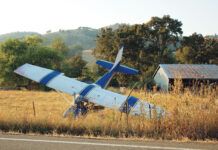
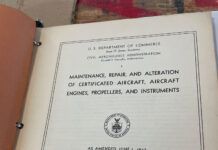

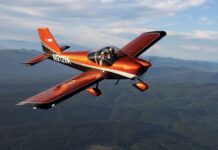
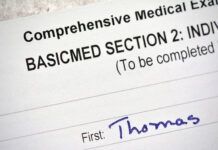

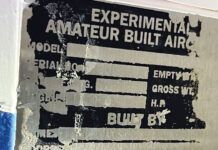
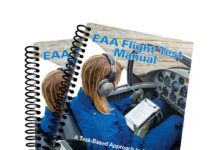
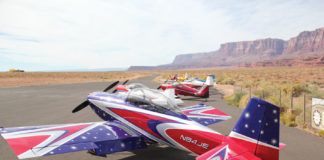
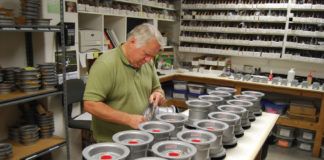
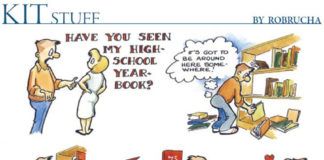
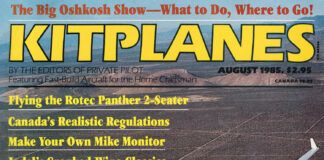
“Ramps” checks only apply by law to Part 135 & 121, not part 91. You only have to show, not give, your certificates. They have a FAA book to guide them, but it doesn’t apply to you. As with policeman, they can say anything, legally or illegally, to get their way with you. You don’t have to comply with anything else. They have a internal regulations for themselves, but we only fall under the FARS. Per the USA Constitution you don’t have to consent to a search of your privacy aircraft. Just say no.
Eric, thanks for being a reader and for reaching out.
I forwarded the text of your comment to a source at the FAA and here is the answer that I received.
“We follow FAA Order 8900.1.
Volume 6
Chapter 1 is Part 91
Sections 1-8
This guidance contains 14 CFR’s that apply to 91 operations and maintenance.
The “ramp” is simply a cause to check for obvious compliance issues.
US code 44709 gives the Administrator/Inspector authority to inspect at any time a civil aircraft, engine,propeller,appliance, air nav facility, air agency or any certificate holder.”